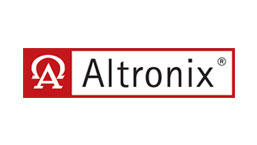Creenan, Amherst Alarm, Elected Security Industry Alarm Coalition Chairman
 Tim Creenan, founder and Vice President of Amherst Alarm and a long-time leader in the field of electronic security, has been elected chairman of the Security Industry Alarm Coalition (SIAC).
Tim Creenan, founder and Vice President of Amherst Alarm and a long-time leader in the field of electronic security, has been elected chairman of the Security Industry Alarm Coalition (SIAC).
SIAC is comprised of four major North American security associations–Canadian Security Association (CANASA), Security Industry Association (SIA), The Monitoring Association (TMA), and the Electronic Security Association (ESA). Tim serves as the ESA representative on the board.
SIAC represents one voice for the electronic security industry on alarm management issues by communicating solutions and enhancing relationships with law enforcement.
“Tim’s unanimous selection reflects his commitment to SIAC’s mission and breadth of experience and leadership in our industry,” said outgoing chairman Kirk MacDowell. “As treasurer, Tim demonstrated exceptional leadership as the finance chair steering the financial ship with precision and securing a solid foundation for the future.”
“Working with Kirk and our other board members has been a privilege,” said Creenan. “We will continue to move forward on our path of grooming the next generation of experts on our law enforcement liaison team and enhancing the fund-raising efforts to support SIAC’s important mission.
“While SIAC has had a great deal of success promoting the Model Alarm Ordinance in communities throughout the country, there are still many opportunities as we help promote the TMA AVS-01 standard, ASAP-to-PSAP and other technology to reduce unnecessary dispatches,” said Stan Martin, SIAC Executive Director.
Tim started in the electronic security field in 1975 working for a large locally owned security firm. Tim earned a degree in electronic engineering at State University College at Buffalo. In 1984 Tim and his wife founded Amherst Alarm, Inc., which today has more than sixty-five employees serving the Western New York market. Amherst Alarm is the recipient of the prestigious Police Dispatch Quality Award (PDQ). In March 2023, Amherst Alarm became part of the Pye-Barker Fire Safety family of companies.
Tim’s involvement in the industry associations began with the Western New York Electronic Security Association, where he served as Secretary, President and Past President. He has also served the New York State Electronic Security Association, as Secretary, Treasurer, Vice President, and President- during two different terms. He is currently Chair of the association’s Legislative Committee and was instrumental in leading the association’s efforts in reforming the enforcement policies of New York State’s alarm installer license. On the national level, he has served as chairman of the Election Committee of the Electronic Security Association, the Government Relations Committee, Governance Task Force and as member of the Board of Directors as the New York State Electronic Security Association representative. And is a past Board member of the Electronic Security Association. He is also involved in SIAC – Security Industry Alarm Coalition as a member of the board of directors as Treasurer.
In 2018, Tim was inducted into the Security Sales & Integration’s Hall of Fame.
Tim’s concern for the industry and public has kept him focused on reducing false alarms. This has led to Amherst Alarm’s certification in and his personal involvement in the Installation Quality (IQ) Board program, where he served as Treasurer, Chairperson and is currently board member.


 We are saddened to inform you of the passing of John Woodman, former president of Washington Alarm and TMA Board of Directors member. A pivotal figure within the alarm industry, John passed away on Wednesday, November 22nd.
We are saddened to inform you of the passing of John Woodman, former president of Washington Alarm and TMA Board of Directors member. A pivotal figure within the alarm industry, John passed away on Wednesday, November 22nd. 





